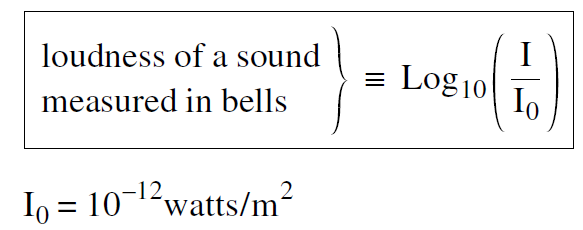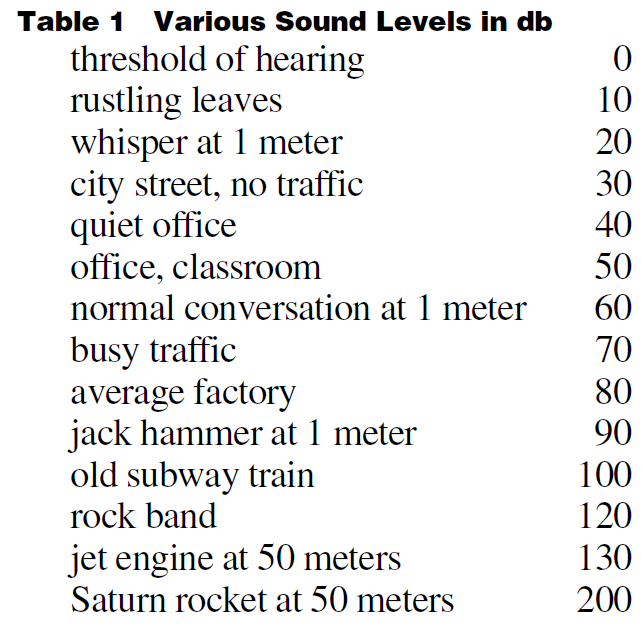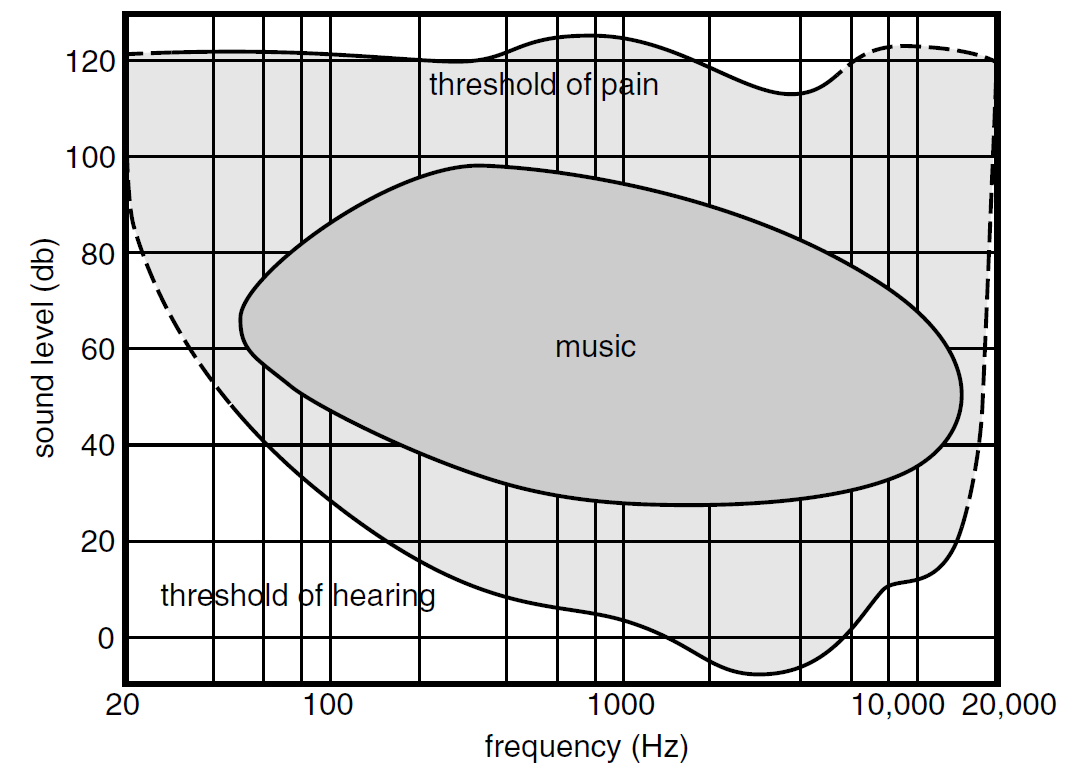Bells and Decibels
The scale of loudness defined as Log10 I/I0 with I0 = 10–12watts/m2 is measured in bells, named after Alexander Graham Bell, the inventor of the telephone.
 .......(1)
.......(1)
From this equation, we see that the faintest sound we can hear, at I = I0, has a loudness of zero bells. The most intense one we can stand for a short while has a loudness of 12 bells. All other audible sounds fall in the range from 0 to 12 bells.
It turns out that the bell is too large a unit to be convenient for engineering applications. Instead one usually uses a unit called the decibel (db) which is 1/10 of a bell. Since there are 10 decibels in a bell, the formula for the loudness β , in decibels, is
 .....(2)
.....(2)
On this scale, the loudness of sounds range from 0 decibels for the faintest sound we can hear, up to 120 decibels (10 × 12 bells) for the loudest sounds we can tolerate.
The average loudness of some of the common or well known sounds is given in Table 1.

An increase in loudness of 10 db corresponds to an increase of 1 bell, or an increase of intensity by a factor of 10. A rock band at 110 db is some 100 times as intense (2 factors of 10) as a jack hammer at 90 db. A Saturn rocket is about 10 20 times as intense as the faintest sound we can hear.
Our sensitivity to sound depends not only to the intensity of the sound, but also to the frequency. About the lowest frequency note one can hear, and still perceive as being sound, is about 20 cycles/second. As you get older, the highest frequencies you can hear decreases from around 20,000 cycles/sec for children, to 15,000 Hz for young adults to under 10,000 Hz for older people. If you listen to too much, too loud rock music, you can also decrease your ability to hear high frequency sounds.
Figure (1) is a graph of the average range of sound levels for the human ear. The faintest sounds we can detect are in the vicinity of 4000 Hz, while any sound over 120 db is almost uniformly painful. The frequency ranges and sound levels usually encountered in music are also shown.

Figure 1: Average range of sound levels for the human ear. Only the very young can hear sound frequencies up to 20,000 Hz. (Adapted from Fundamental Physics by Halliday and Resnick, John Wiley & Sons.)
 الاكثر قراءة في الصوت
الاكثر قراءة في الصوت
 اخر الاخبار
اخر الاخبار
اخبار العتبة العباسية المقدسة


